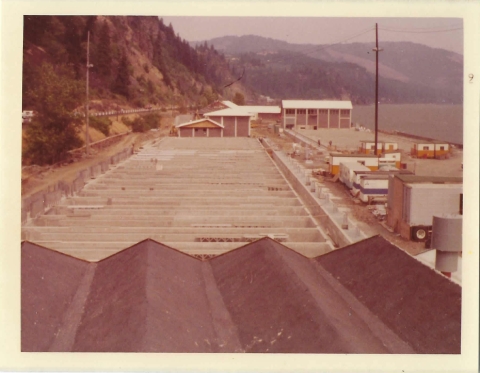About Us
Since 1871 the National Fish Hatchery system has been at work improving recreational fishing and restoring aquatic species that are in decline, at risk, and are important to the health of our aquatic systems. Across the country, the network of National Fish Hatcheries work with states and tribes to conserve, restore and enhance the fish and aquatic resources of America for future generation.
We raise 12.5 million young Tule Fall Chinook salmon each year, making a significant contribution to the ocean, tribal, and sport fisheries. We mitigate for habitat loss due to hydro-electric projects on the Columbia River and fulfill tribal trust responsibilities.
We are located in south-central Washington at approximately river mile 167 on the Columbia River.
Our Mission
Since 1871, National Fish Hatcheries have been applying science-based approaches to conservation challenges. We work with our partners and engage the public to conserve, restore, and enhance fish and other aquatic resources for the continuing benefit of the American people. Conservation is at the heart of what we do, and we recognize that we do this work for the American people–both the present generation who benefit today and future generations who will inherit our legacy of conserving America’s aquatic resources.
Our History
Spring Creek National Fish Hatchery was established in 1901 as one of several egg collection stations for the Bureau of Commercial Fisheries Clackamas Hatchery. As the human population of the Columbia River Gorge increased, heavy fishing pressure and destruction of habitat resulted in the U.S. Government deciding to produce fish at the hatchery.
Our water supply comes from a series of five unnamed springs located at the base of basalt cliffs north of the hatchery. Water rights are also held for Columbia River water. We are a water conservation facility. Water is reused through a complex series of biological filters that enhance water quality while minimizing the need for a large fresh water supply.
The original hatchery was flooded when the Bonneville Dam was completed in 1938. After several modifications, the hatchery was redesigned and rebuilt in a new location by the U.S. Army Corps of Engineers in 1972. Expansion was undertaken to partially compensate for fall Chinook spawning ground losses due to dam construction along the Columbia River.
Other Facilities in this Complex
We're part of the Columbia River Gorge National Fish Hatchery Complex, which includes the Carson, Eagle Creek, Little White Salmon, Spring Creek, Warm Springs, and Willard National Fish Hatcheries. Our complex propagates, releases, and transfers to partners over 25 million salmon to meet the U.S. Fish and Wildlife Service's fisheries mitigation, restoration, and tribal trust responsibilities. Explore what each facility has to offer below.






